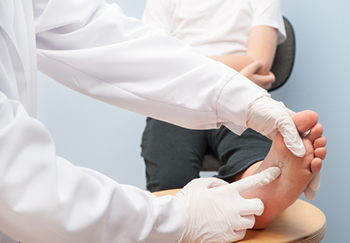
Warts aren’t pretty, but they do have variety. They can come in all shapes and sizes, show up as single bumps, clumps or flat lesions; in hues of white, pink or tan. They can have black dots in the middle that look like seeds, dents or smooth surfaces.
Unfortunately, warts also vary in terms of their impact on the people they infect. Common warts are almost always harmless, although they can look unappealing.
We talked with Kate DeGeorge, MD, for the scoop on what warts are normal and which need medical attention and special care.
All About Warts
How do you get them?
Warts are caused by the human papilloma virus (HPV); over 100 strains of HPV exist. Common warts (live on the skin) occur mostly in kids, young adults or in people who are immunocompromised. They spread through wart-to-skin contact. They spread more easily if you have cuts or scrapes; biting your nails or picking at hangnails can make you more prone to getting them on your fingers or hands.
Can all warts become genital warts?
Yikes! No. Definitely not. Different strains of HPV cause genital warts than cause common skin warts.
What types are common, not harmful?
Common warts cause no harm other than being unsightly.
While some strains of HPV can cause cervical cancer, strains that cause genital warts carry a very low risk of cervical cancer. Those high-risk HPV strains are part of what we look for with pap smears.
When are they harmful?
For immunocompromised people, like those with HIV/AIDS or who have had an organ transplant and take medications to prevent rejection, it can be impossible to get rid of warts entirely. For these people, there is also a very small chance that it could become cancerous.
When is a bump a cause for concern?
You should have a bump checked by your doctor if it:
- Bleeds, itches or is painful
- Isn’t clearly a wart
- Grows or changes
- Interferes with activities
- Doesn’t go away with over-the-counter treatments
How do you treat them?
Are You Worried?
Find a primary care doctor near you.
You can choose one of three options.
- Watch and wait. Most will go away on their own within 18 months.
- Try over-the-counter treatments. These include:
- Salicylic acid
- Cryotherapy (freezing liquid)
- Duct tape (apply and leave in place for about a week, then pumice or file the wart and repeat until it’s gone)
- See your doctor, who may treat with:
- Topical solutions (including salicylic acid) that induce peeling
- Cryotherapy (freezing off)
- Laser treatment
- Excision (cutting the wart out)
It’s important that you don’t pick at it or surrounding skin, because that can actually increase the spread of the warts or make more grow nearby.


What about warts that one has for years? O have had mine for about 8 years now and sometimes they grew bigger hut overall basically stationary. I tried over the counter medicines but either they didnt work or the warts slowly start coming back
Hi Ariana, it sounds like a trip to the dermatologist might be in order, if the warts continue to bother you!
My 12 year old granddaughter has been treated for about 20 warts over a year now on her knees and hands to no avail! They have tried freezing, duct tape. Some have stayed away but some are returning and one on her ring finger is now becoming like loose skin with seeds and growing! Kids are making fun of her! Doctors are stumped it seems! We are desperate! Can she take something orally and topically?
We’re sorry to hear about your granddaughter! Unfortunately, we can’t give medical advice through this blog — if you haven’t already done so, you may want to seek a second opinion from a specialist or ask her doctor for a referral.
I’ve had my feet warts for over 5 years now,, ive been now after 5 years using treatment with that acid,, they are becoming smaller but the skin around my warts are practically falling off, dont know if thats a good or bad thing and if after 12 months my warts haven’t gotten closed down does it mean its something bad?
I had what i believed was a small wart on my cheek that had a small pinhead blood spot on it. started to treat it with over the counter acid applying it in the morning and peeling the residue off at night and reapplying. After a few days it started to bleed when cleaning off the mornings application. So i stopped all treatment to let it heal, The top has formed a scab and the surrounding area looks like a puffed up pillow in a perfect little circle. Its not really inflamed but itches somewhat. Its healing rather slowly…should i just ride it out?
We can’t give medical advice online, and we suggest you get this checked out by your doctor. It could be more serious than a common wart.
I have had light clumps of what looks like simple warts for over 30 years now. I have not sought treatments as it seems harmless except that it looks really unappealing and has marred my six-packs. It I have always had the plan to meet an experienced dermatologist once I have the means.
what do i do about mine which is in the earlobe btw.
i hade it for over 4 year it just dont want to go i did cut it 2 or 3 times with my nails but it grew back
should i go to the doctor or???
If you’ve tried over-the-counter treatments and they haven’t worked, then yes, you should have it checked by your doctor.